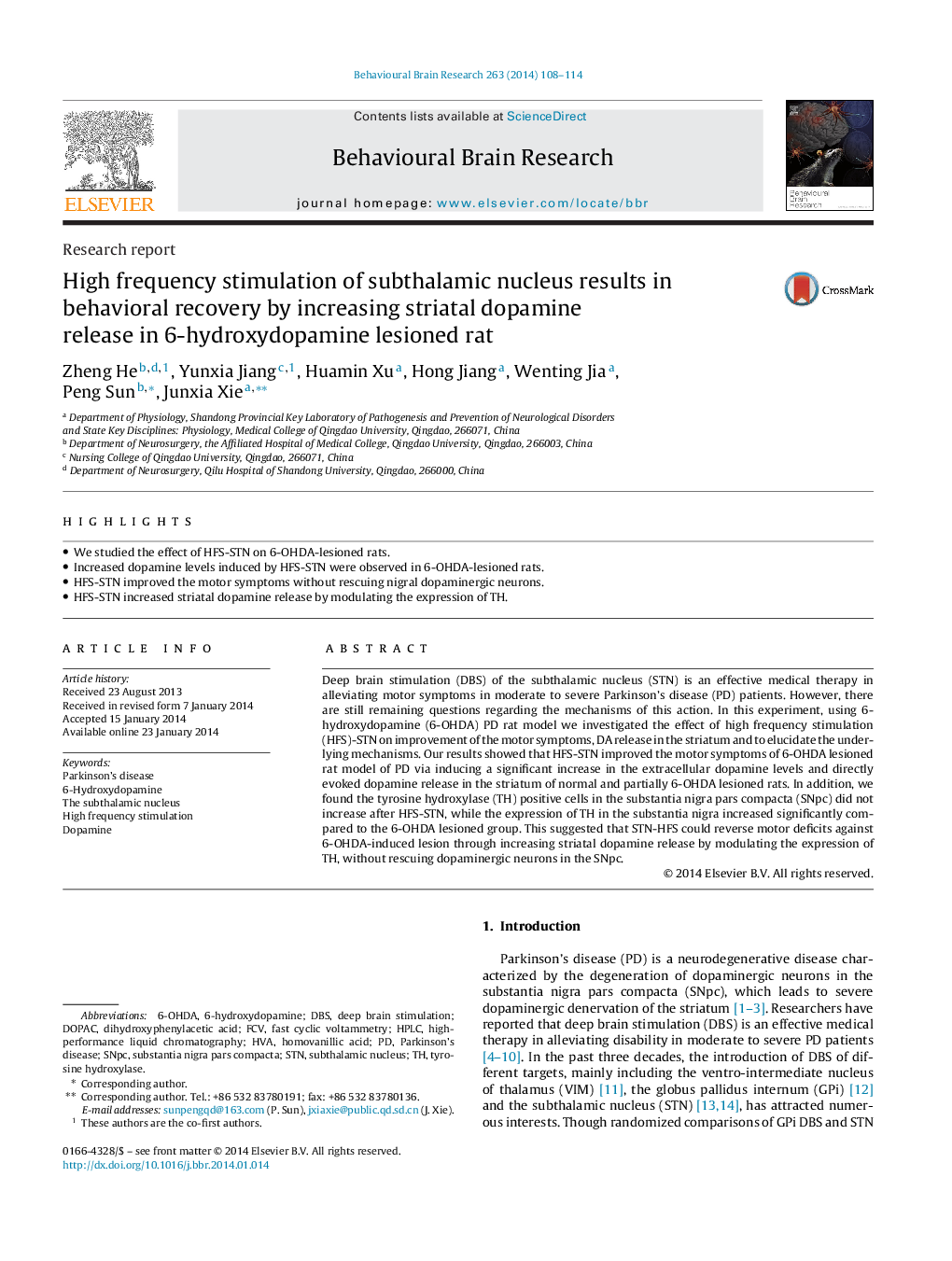| Article ID | Journal | Published Year | Pages | File Type |
|---|---|---|---|---|
| 6258146 | Behavioural Brain Research | 2014 | 7 Pages |
â¢We studied the effect of HFS-STN on 6-OHDA-lesioned rats.â¢Increased dopamine levels induced by HFS-STN were observed in 6-OHDA-lesioned rats.â¢HFS-STN improved the motor symptoms without rescuing nigral dopaminergic neurons.â¢HFS-STN increased striatal dopamine release by modulating the expression of TH.
Deep brain stimulation (DBS) of the subthalamic nucleus (STN) is an effective medical therapy in alleviating motor symptoms in moderate to severe Parkinson's disease (PD) patients. However, there are still remaining questions regarding the mechanisms of this action. In this experiment, using 6-hydroxydopamine (6-OHDA) PD rat model we investigated the effect of high frequency stimulation (HFS)-STN on improvement of the motor symptoms, DA release in the striatum and to elucidate the underlying mechanisms. Our results showed that HFS-STN improved the motor symptoms of 6-OHDA lesioned rat model of PD via inducing a significant increase in the extracellular dopamine levels and directly evoked dopamine release in the striatum of normal and partially 6-OHDA lesioned rats. In addition, we found the tyrosine hydroxylase (TH) positive cells in the substantia nigra pars compacta (SNpc) did not increase after HFS-STN, while the expression of TH in the substantia nigra increased significantly compared to the 6-OHDA lesioned group. This suggested that STN-HFS could reverse motor deficits against 6-OHDA-induced lesion through increasing striatal dopamine release by modulating the expression of TH, without rescuing dopaminergic neurons in the SNpc.
